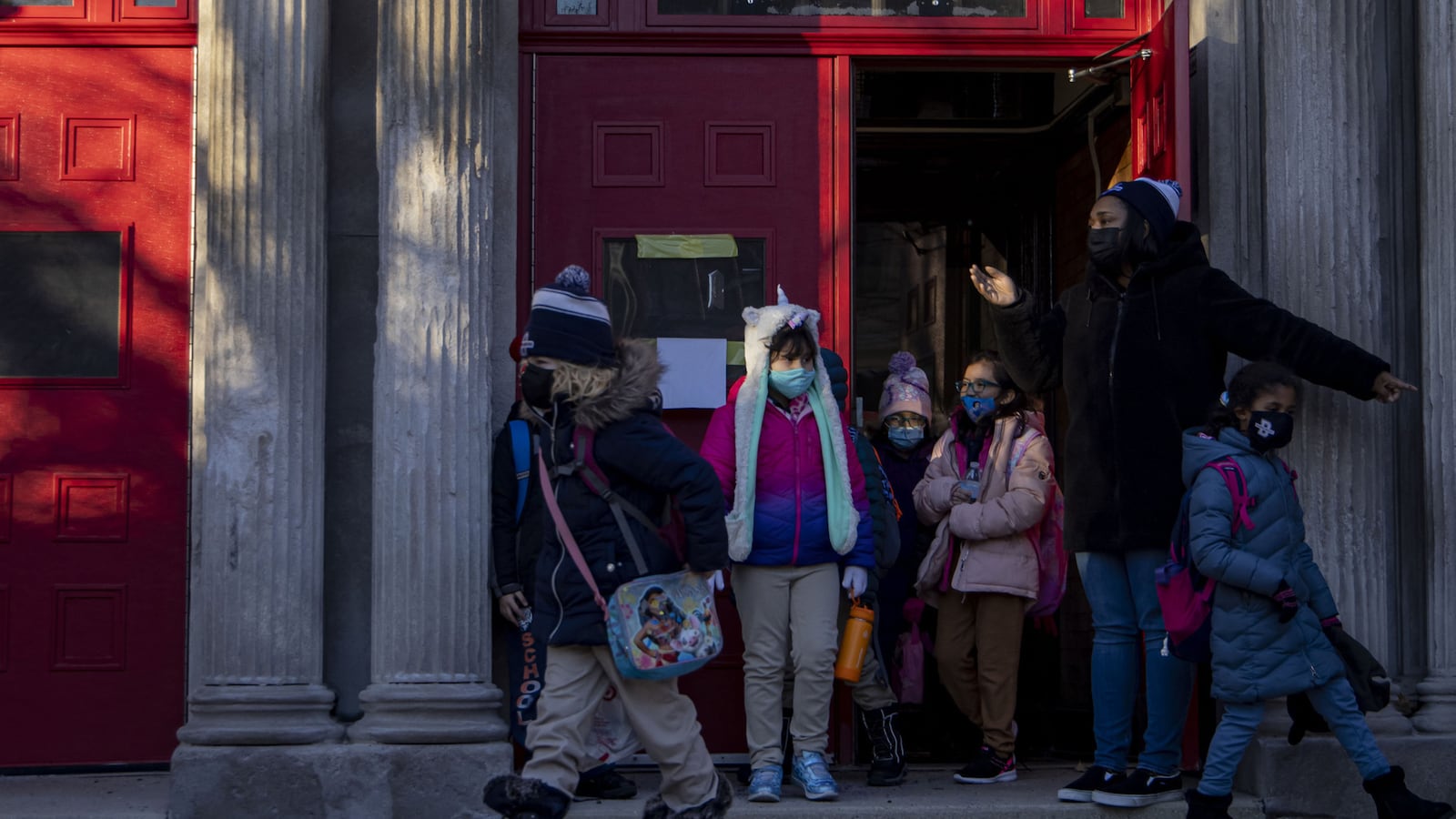A rising COVID positivity rate due to the omicron variant. A fast-turnaround teachers union vote to force remote learning. Chicago’s abrupt school shutdown. In mere days, the lives of Chicago educators, students, and families have been upended.
Chicago Public Schools has not yet said what learning will look like over the coming days and weeks, as union officials and district leaders return to the bargaining table to talk proposals and counter proposals. At issue are COVID safety measures and metrics that would govern operations of the nation’s third largest school district for the rest of the school year.
Chalkbeat Chicago and student journalist Norah Hendrickson checked in with several educators, parents, and students about how this moment of uncertainty feels and the potential impact of the suspension. Here’s what they told us.
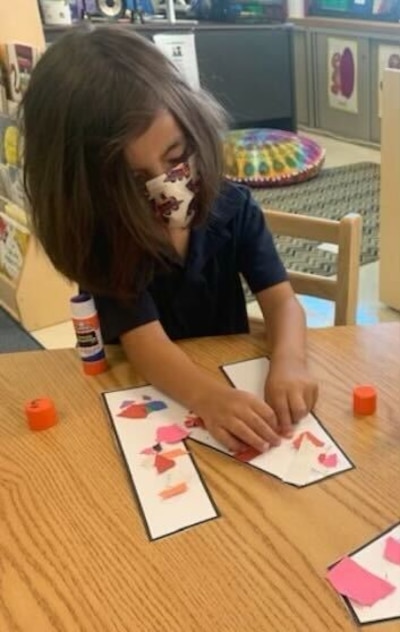
Cristina Hernandez, parent of a preschooler
Hernandez’s 4-year-old son has been at home since winter break because he tested positive for COVID last week. Even if he had tested negative, Hernandez would likely not have sent him to class because he is too young to be vaccinated and she has not been able to find him a high filtration mask recommended by public health officials.
But it didn’t matter since many students didn’t show up to class on Monday, according to what other parents told Hernandez.
Even though school buildings shut down because the Chicago Teachers Union voted to stop in-person teaching for safety reasons, Hernandez is supportive of teachers.
“I believe that like our kids all come first,” she said, “and I believe that the teachers are trying to do what’s best.”
With COVID cases spiking, Hernandez still worries if her child will be safe in classrooms after school starts again. But she knows being in school will be good for him – academically and for his mental health.
— Samantha Smylie
N, parent of a middle school student who attends Bell Elementary
With the Chicago Teachers Union vote coming late last night without little to no time to prepare, the sudden shock of not having school today was upsetting for N.
N — who asked that Chalkbeat not use her full name — said that Chicago Public Schools, Mayor Lori Lightfoot, and the teachers union should have come together to create a plan that shows respect for parents and their priorities.
“When it really comes down to it, if it really is a priority, Mayor Lightfoot should have called all the health workers in the city available to us and said ‘We’re gonna test everybody’ on the first day,” said N. “They’ve got resources, but they’re not being utilized.”
While she understands the calls from the teachers for safe schools amid a spike in positive COVID cases, she wished she had 24 hours to prepare. As a working parent, she had to call off her job.
Her son woke up Wednesday morning an hour later than usual, but was upset, saying “It’s horrible to not be able to go to school.” He spent the day working lightly on projects for school and reaching out to friends to see if they were available to hang out.
N and her son got through the first day of the standoff, but they are nervous about what the rest of the week will look like.
— Samantha Smylie
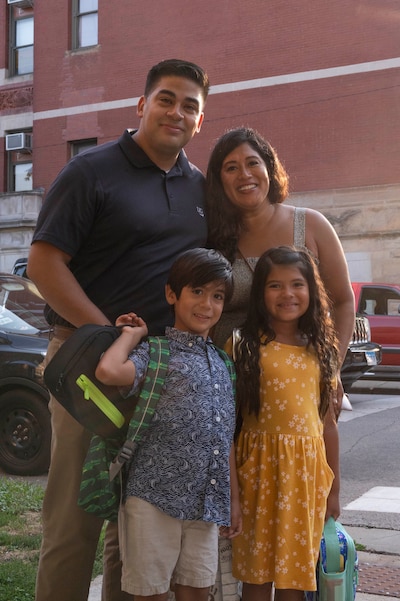
Nariana Castillo, mother of a kindergartener and first grader at Talcott Fine Arts and Museum Magnet
At the dinner table Sunday evening, Nariana Castillo gently broke some news to her two young children: They would sit out the following day’s return to school after winter break. Castillo and her husband, Robert, had decided COVID was just too rampant in the city. The children, Mila and Mateo, had already missed the last week before the break because Mateo’s class had to quarantine and skipped Christmas and New Year’s celebrations because relatives got sick. (Chalkbeat profiled the Castillo family in a first-day-of-school story.)
Now, in the kitchen of the family’s McKinley Park home, there was disappointment and apprehension. Mila, Castillo’s first grader, had especially relished in-person school. Then, she had an idea: They could create a schedule for school at home and post it on the fridge, restoring some of the school day’s structure.
They did just that. On Monday morning, Mila donned a favorite dress and was ready for school with her mother and brother by 7 a.m. They have since watched YouTube videos about deep-sea creatures, painted, built Lego structures, worked out virtually with Castillo’s friends, and conducted a kinetic fan science experiment.
The district has not said how many students were absent this week; a principals group said it believes as many as a third were, based on a survey of school leaders on 225 campuses.
Castillo says she was planning to reassess her decision to keep her kids home before next week — when news came that school once again had come to a halt amid a stalemate over COVID protocols between the district and its teachers union. She says she sympathizes with educators’ safety concerns. A stay-at-home mom, she also feels for parent friends who don’t have the option of remaining home with their children.
Now that classes are canceled, her children are no longer racking up unexcused absences. But a sense of uncertainty has deepened.
Castillo says she hopes the district will return to virtual learning — but for only a short while.
“I don’t think anyone is a huge fan of remote — students, parents, teachers,” she said. “It’s so frustrating as a parent because you just know CPS and CTU are not going to see eye to eye.”
— Mila Koumpilova
Anika Matthews, mother of a fifth grader at National Teacher Academy
Anika Matthews started awake Wednesday when she got a robocall from Chicago Public Schools, with the news she had anxiously awaited the previous night before giving up and going to bed. There would be no classes that day.
Mathews got out of bed and went to talk with her daughter, Paninah.
“Are we going to school?” the girl asked as soon as she saw her mom. “Are we doing remote?”
Matthews told her that they would once again brush up a routine they had perfected during a largely virtual last school year and a November spent almost entirely in quarantine: Paninah would spend the day in the office of her mother, an attorney.
The girl has been thrilled to be reunited with all her classmates this past fall — but it has been a challenging run for the family. Substitute teachers have stepped in repeatedly, and once, when no sub could be found, a support staffer covered the classroom. Then, November brought back-to-back quarantines after a student and an educator tested positive.
“The whole semester has been very, very stressful,” Matthews said. “Our school has done the best they can.”
Matthews said Paninah’s teachers sent materials for remote learning home with students Tuesday, and she is grateful her daughter is prepared. After a Wednesday sharing an office with a bored and restless youngster, Matthews hopes virtual learning will return Thursday — followed by a quick agreement between the district and its teachers union.
But given the unpredictability of the virus and the district’s staffing crunch, she is bracing for a rough winter and spring.
— Mila Koumpilova
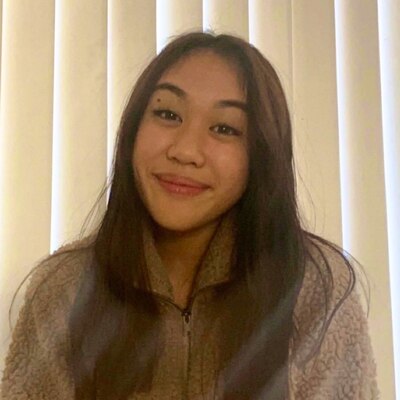
Megan Camacho, high school senior at Lane Tech College Prep High School
When she heard schools were going to shut down again, Megan Camacho realized she was potentially poised to spend more of her high school career in remote learning flux than in class — a depressing prospect. Fall’s reopening had given her the opportunity to salvage her senior year and finish out with her peers. Now, that seemed to be in jeopardy.
Camacho has mixed feelings about the shutdown. She thinks the crowded hallways in her school — the largest in the state, with 4,400 students — present risks to students. A temporary shift to virtual learning seems reasonable as COVID rates rise due to the omicron variant, but she’s worried about a remote period stretching past the eight day timeline the union has laid out. (The union resolution asked members to vote to stay remote until Jan. 18, but the city has not yet agreed to that.)
She is working on her college essays and eager for teacher feedback – much easier in person, she says.
“In a remote situation, having to ask a teacher a question can be hard. Some days you are feeling antisocial or anxious or you don’t want to interrupt their spiel,” she said. “Even asking after class, we have a tight virtual passing period of five minutes where you can run to the bathroom or get water. It’s hard to talk to a teacher online.”
One bright spot is her campus newspaper.
Since things have shifted online before, the editors have figured out how to communicate remotely.
“Obviously we lose the classroom experience of pitching and scheduling and laying out the paper,” she said — but there’s no shortage of stories to write at the moment. “We’re very focused on this issue.”
— Cassie Walker Burke
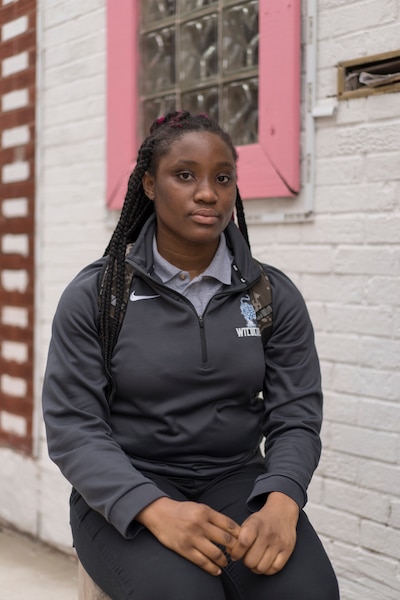
Ajibola Junaid, high school senior at Wendell Phillips High School
Ajibola Junaid sat in her Englewood home Wednesday with her school closed and her paid internship at the University of Chicago Trauma Center paused because of rising COVID rates. She has witnessed the wrath of COVID firsthand at the trauma center.
She says she’s glad the city’s teachers union has pushed to temporarily close school buildings.
“We don’t know what people do after school or where they go,” she said.
But remote learning has proven difficult in the past, and the lockout of teachers from their accounts feels like it’s punishing students.
“I need my teachers to send my transcripts and letters of recommendation to schools,” she said. “Applications are closing soon. I honestly don’t know what to do. Communications from home with teachers are extremely difficult.”
One safety issue weighing on Junaid’s mind is the lack of enforcement over social distancing and masking rules at her school. Since an outsider recently snuck past the front desk and started a fight with a student, students have been required to leave their hooded sweatshirts in the auditorium each morning. The auditorium gets crowded, and it’s hard to social distance.
“The school needs to enforce more rules and space out students,” she said.
She’d like to see remote learning continue until the omicron spread slows. She’d also like her school to figure out ways to address students’ mental health needs virtually.
“Last year all the school cared about was our academics,” she said, “but there are so many students who have issues going on with them.”
— Cassie Walker Burke
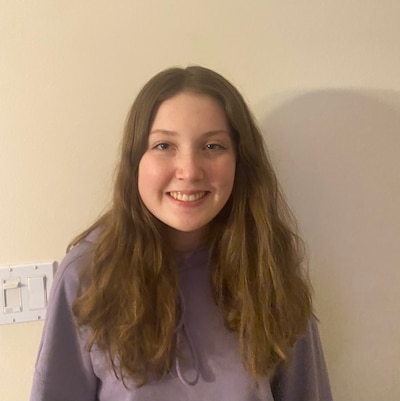
Maggie Clark, high school junior at Jones College Prep
During winter break, high school junior Maggie Clark contracted COVID and recovered, so she was ready to reunite with friends. She was disheartened to see that school had been canceled on Wednesday and remote learning was a possibility.
“I was upset that we weren’t able to go to school because today was a perfect opportunity for us to go,” said Clark. “I feel like there was no reason why we had to stay home.”
She doesn’t think online learning is sustainable in the long run.
“It will definitely impact students’ mental health,” Clark said. “It’s very hard for students to be engaged in school without any social interaction with teachers or other students.”
On Wednesday, she was using the cancellation to spend time with friends and revise an English essay. But every few minutes, she went online and to Twitter to keep up with the latest news about what school will look like in the coming days.
“I would like to see more information being available to parents and students because I feel like they’re the people being most affected by this issue,” said Clark.
As decisions get made, she hopes students are on the forefront of the teachers’ union mind.
“I feel that CTU isn’t taking an interest in what the parents and students need,” Clark said. “They’re putting the needs or feelings of teachers before the students or parents and that’s unacceptable.”
— Norah Hendrickson
Marley Olivera, 8th Grade Language Arts and Social Science teacher at Melville Fuller School of Excellence
Marley Olivera’s eighth grade students were supposed to spend this week learning about heroes – comparing the fictional Black Panther of Marvel Comics with real-life civil rights icons such as John Lewis and Fred Hampton.
Instead, on Wednesday morning, Olivera, who teaches language arts and social science, tried to log onto Google Classroom only to find herself locked out. She tried her Chicago Public Schools email. Locked out. Other district learning apps. Locked out.
The Melville Fuller School of Excellence teacher had no way to contact her students. No way to make sure they had work to do. No way to check if they were safe or shaken by the standoff between the Chicago Teachers Union and the school district.
So, Olivera snuck into her third floor classroom, grabbed papers and packets and Post-it notes – anything that might help her students navigate the next few days without classes – and dropped off the materials at the school’s front desk. That way, she hopes, any student who needs the supplies can get them.
Even before she and other union members voted to stop in-person teaching over the district’s COVID protocols, Olivera says, school was far from normal.
The week before winter break, her classes were quarantined after COVID exposure.
This week, barely a handful of students had come to school. In one class, only eight of 24 made it in – the rest stayed home because they were sick or quarantined or because fearful parents chose not to send them.
The students who showed up were nervous about contracting COVID, and spent a good chunk of time wiping down desks and washing their hands. Olivera tried to bolster their spirits, but she also worried.
She hopes the standoff ends quickly and the district agrees to better contact tracing, wider testing, and remote learning for two weeks, until the latest COVID surge subsides.
“It is true that in-person learning is the best-case scenario,” said Olivera, an eight-year teaching veteran. “But, it’s also true that, right now, school may not be the safest for all parties involved.”
– Mónica Rhor
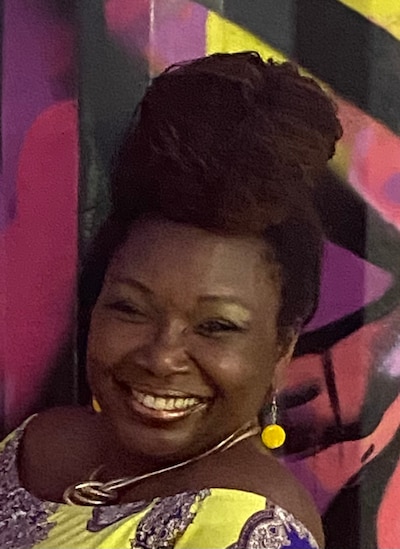
Juanita Nave, math teacher at South Shore International High School
Juanita Nave kept willing a miracle to happen. She kept hoping that somehow Chicago Public Schools leaders and the teachers union could agree on COVID protocols.
The math teacher at South Shore International High School willed it as she prepared to return to school after winter break, while she checked emails from her students, making sure they were on track with an extra credit assignment. She willed it as she packed the KN95 mask a colleague had given her.
She willed it even as she thought of the COVID surge swirling around her, leaving many of the desks in her classroom empty as students got sick or were quarantined, flooding her inbox with worried notes from parents, and filling the 55-year-old with unease because of the Type 1 diabetes that puts her at high risk.
Nave pulled for a miracle right up until she watched Chicago Mayor Lori Lightfoot and Chicago Public Schools CEO Pedro Martinez at a livestreamed press conference on Tuesday night, just hours before the teachers union vote.
Lightfoot seemed so angry, thought Nave, so lacking in empathy for the city’s teachers. Nave knew then that no miracle was coming.
“She’s trying to stick it to us again and doesn’t care about us or the children,” Nave said Wednesday, as the 29-year educator sank into a mix of relief, concern, and frustration.
With COVID “popping up” all around her, Nave had worried about spending six hours in a classroom with more than two dozen students, with lax mask-wearing and no room to social distance. She wants the district to agree to flip to remote learning for two weeks, or until COVID case numbers subside.
But she is also worried about her students, whom she is now unable to reach because CPS teachers have been locked out of district accounts.
That special project researching mathematicians of color could boost their grades. But, until the standoff ends or teachers are allowed to access remote learning tools, she can’t help them.
“They are on their own,” Nave said. “They are being cut off from us.”
– Mónica Rhor


